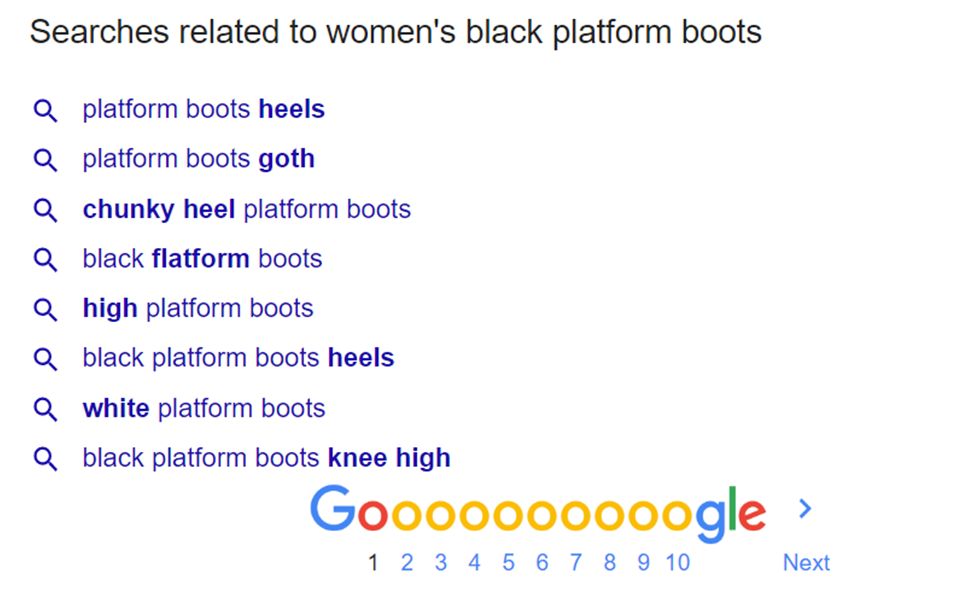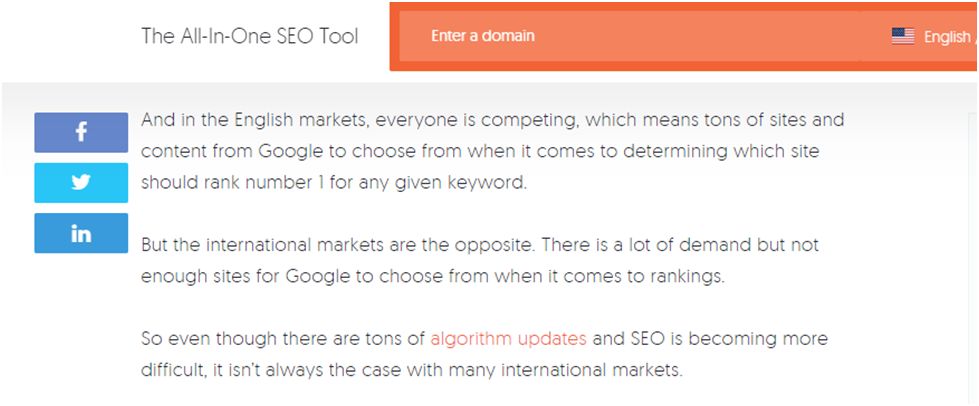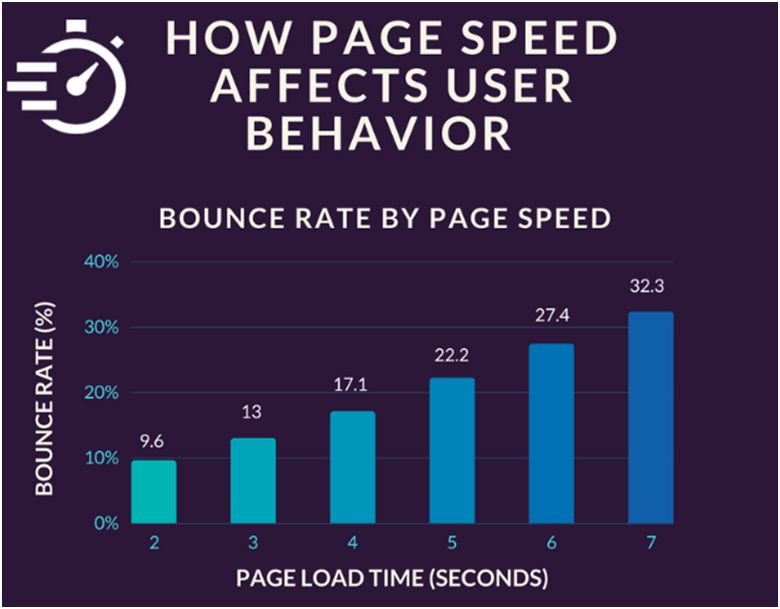Anyone who wants their copy to be discovered and valued will use SEO techniques to achieve that. SEO-friendly copy builds organic traffic to your website, increases brand awareness, raises your chances for making more sales, and overall, helps you keep your business running.
We have reached the point where one doesn’t go without the other if you aim to see results. Combining SEO elements into copywriting is challenged by the ever-changing SEO algorithms. However, there are SEO copywriting rules that stay against the test of time and remain their importance.
This guide will introduce you to all the crucial elements of SEO copywriting. Whether you are new to the whole SEO copywriting method or you have some experience, you will be able to find useful and practical advice that will steer your writing in the right direction. So, are you ready to learn what will make search engines value your copy? Let’s begin!
Keyword Research
Keywords play a big part in SEO. Why? Well, based on the keywords that you include in your text and keywords that users search, search engines find connection and lead them to your page.
Therefore, keywords are one of the basic guides that take users to your copy. In order to include proper keywords that will connect you to your target audience, you have to do keyword research. The aim is to determine the intent of your target audience searches and what type of keywords they usually use for their search.
To do proper keyword research you can:
- Use Google Keyword Planner
- Experiment with different keywords related to your niche and see what results come up
- Think about what would you type in as a user and come up with variations of that term
Look into Google’s “Searches related to X” section for some ideas

The main keyword should be in the headlines, some subheadings, and in the body of the text. It needs to signal to search engines and users what type of information they can find in your copy.
Lastly, make a list of all the relevant keywords you surfaced. You should do this before you start writing so that you can naturally introduce them to the copy. If there are keywords that don’t fit the context it’s better to skip them than to ruin the content’s quality.
Differentiate Types of Keywords
Following up on the importance of keywords, you should know what type of keywords you have on your disposition. There are:
- Short-tail keywords
- Long-tail keywords
- LSI keywords
Short-tail keywords consist of one or three words. They have a high volume as lots of searches can be connected to them. Additionally, they face higher competition because numerous search queries can be matched with that keyword. That’s why SEO experts emphasize the importance of long-tail keywords.
Long-tail keywords are more specific as they are phrases that consist of three or four words. Their descriptiveness works more efficiently when it comes to connecting users with your website. For example, if a short-tail keyword is men’s shoes, the long-tail keyword can be black formal men’s shoes. Long-tail keywords provide users with more precise results and that’s why search engines value them.
When it comes to LSI keywords they stand for latent semantic indexing keywords. They present phrases that are related to your main keywords. Their purpose is to help your copy rank higher for that term category.
You can find as many keyword phrases as you want, but just remember not to get spammy with them. Focus on a few main keywords and spread them equally and naturally across the content’s headers and body.
Write High-Quality Pieces
Writing high-quality copy is another essential aspect of SEO strategy. With the advancement of search engine algorithms, you can’t fool them with lots of keywords and links. You have to deliver quality content first.
What does quality content mean?
First of all, it has to have a purpose. The purpose can be to inform, entertain, educate, or persuade people. In any case, that purpose has to be clear and notable. Creating content just for the sake of publishing something won’t do.
Quality content is also distinguished by its well-written form and credible information. That’s the only way you can win people’s trust. You have to write about topics you are knowledgeable about or provide sources of your information.
The reason why high-quality content is relevant for SEO is that it builds trust, it lowers the bounce rate, and it encourages social sharing that bring you more attention. Search engines do take into account how long people spend on your website and how many shares does it get.
According to research, the top four ranking factors are:
- Website visits
- Time on site
- Pages per session
- Bounce rate
High-quality content will ensure that those factors are taken care of. That’s why there should be no messing around when it comes to creating quality content.
Add Internal and External Links When Appropriate
Internal links lead readers to other pages and articles on your website. On the other hand, the external link directs them to pages outside your website. So, what’s their value?
With internal links, you keep the users on your website longer, lead them to pages where they can make a certain action (buy something or subscribe), get to know your services better, and so on.
Internal links are great for SEO purposes but it’s not always easy to connect two copies within your website. That’s why you should only add internal links when there is a relevant opportunity that will contribute to users’ experience. The ideal number of internal links is 2 or 3. However, that does depend on the length of the copy as well.
Let’s take Neil Patel (the master of SEO) as an example. He regularly adds internal links to his posts that lead users to other informative content pieces on his blog.


External links may lead the users to other websites but their value lies in the fact that you provide additional (and important) information to your users. Search engines can notice when your content aims to increase its value with credible references, citations, and sources that come in the form of external links.
Keep in mind that search engines put the user’s interests in the first place. Links can help you rank higher only if they are relevant to that copy and the users.
Find Evergreen Topics
The beauty of evergreen topics is that they’ll attract the leads continuously. They don’t have a temporary value and they won’t be popular in a specific moment. What they do is they drive traffic and have an equal amount of importance at all times.
An evergreen copy can be for example a size guide that will inform users how to choose their size of clothing on your e-commerce website. It can also be the about page that shares the story of the business’s origin.
These topics need to be amazingly written and optimized with keywords. They also work great as internal linking pages due to their general use. For example, you can add a link to the size guide in product descriptions.
Copy whose importance doesn’t depend on the passing of the time will ensure that you have quality content even when you don’t produce a new copy. Evergreen topics are your backups that bring leads without putting in the new effort.
Enhance Copy with Visuals
Lengthy copy without visual seems dull and dry. The power of visuals is that they comply with people’s preference for aesthetically pleasing content. They give life to text and help users visualize the message you are trying to convey.
People are visually oriented beings and if you add an image here and there, the copy will be more attractive and retain their attention.
Try to add images that are 100KB or under. The reason why is that “heavy” images will slow down the website’s performance and negatively affect the user’s experience. When you consider that 32.3% of website visitors will leave if the page speed is 7 seconds you’ll understand why fast loading time is relevant.
To optimize the images you should use ALT texts. The ALT attribute gives information about the image to search engines and users (if they can’t view it for some reason). Be as descriptive as you can when it comes to ALT text so that search engines can lead users to your page based on the ALT text as well. If you can, add keywords into the ALT text.
Videos are also a highly popular visual format. Did you know that marketers who use video grow revenue 49% faster than non-video users? Their secret is in their dynamic nature keeps the users entertained and maintains their attention on your page.

If you have a chance to create a high-quality video don’t hesitate to do that. With animation experts, you can come up with videos that won’t demand extras, different locations, and numerous filming equipment.
Presenting statistics is a good way to provide proof to the audience but instead of listing numbers, you should opt for infographics. Infographics are enticing visuals who deliver relevant information but they come in an attractive form.
Give Content Some Structure
Before they start reading the copy most people skim it first. A copy that isn’t structured will repel any user. Adding structure to your content helps search engines and users spot the main ideas of your copy and assess its importance.
When we say structure, we mean that your copy should have clearly defined subheadings and emphasized any crucial parts of texts. Make the copy easier to read by including numbers and bullets for listing. You can also bold the essential points or put the quotes in italics.
The copy needs to have a form that sets apart different sections and helps the user read the content without any difficulties. Short paragraphs and sentences also contribute to higher readability so try to section of the copy based on different thoughts.
Use Popular Content Forms
Content can be presented in different forms. It is up to you whether you’ll form your topic as a list or as an essay. When choosing between the two, you should go for the lists.
The forms of content that are popular among the audience are:
- How-tos
- Lists
- Testimonials
- Interviews
- Checklists
- White papers
These examples of content forms can give you an idea of what type of content will keep website visitors on your site. You can notice that they have one thing in a common – specific structure. Their structure makes them more presentable and interesting. Therefore, if you can choose to present information in some of these forms don’t hesitate to do that.
To depict what we mean by that, let’s say that you want to share how your customers are satisfied with your services. Instead of simply writing why your customers choose you and not your competitors, you should cite their exact claims and provide website visitors with truthful testimonials.
Optimize for Mobile Searches
Considering the fact that in 2024 80% of users used a mobile device to search the internet you can’t miss out on mobile optimization. When a mobile device accounts for most searches, disregarding mobile optimization can cause a lot of damage to your SEO strategy.
There are several ways that will ensure that your copy presents well on mobile devices:
- Use accelerated mobile pages (AMP) markup
- Use a responsive website design
- Compress images
- Tag posts based on mobile searches
The users’ experience should be just as good on mobile as it is on the website. You don’t want your copy to get distorted when users open it on their mobile devices. Test your website to ensure that it is mobile friendly.
Final Thoughts
SEO copywriting is an extensive process that demands consistent work without instant results. It might sound like too much trouble but when you count in what you gain in the end it is definitely worth it. Even the best websites won’t reach their full potential without optimization.
The above-mentioned elements will help you define your SEO copywriting strategy. Once you have a plan all set and ready, it will be easier to take action and get your website on the first page of search results.
Marques Coleman is a blog writer at GrabMyEssay and specializes in marketing and marketing and copywriting. Moreover, he is an avid traveler and always tries to learn something new.